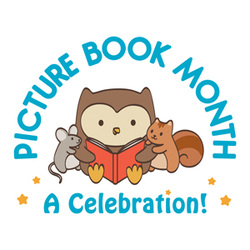
One of my favorites growing up was The Little House by Virginia Lee Burton (first published in 1942!); I credit that book in planting the seed for my interest in urban planning. In high school, a close friend gifted me Jon Scieszka's The Stinky Cheese Man and Other Fairly Stupid Tales, which reignited my love for children's literature. It also reminded me that "kids' books" can be smart and funny, and the picture book format is sometimes the perfect way to convey wittiness for all age ranges. Some of my current favorites are the Scaredy Squirrel books by Melanie Watt, anything by Mo Willems and Peter Brown, and books illustrated by Sophie Blackall, Peter Sis, and Shaun Tan.
Lately, I've also been interested in picture book biographies. There are so many fantastic ones published in the last few years: What to Do About Alice: How Alice Roosevelt Broke the Rules, Charmed the World, and Drove Her Father Teddy Crazy!, Queen of the Falls, Abe Lincoln Crosses a Creek: A Tall, Thin Tale (Introducing His Forgotten Frontier Friend), Bottle Houses: The Creative World of Grandma Prisbrey, and Grandfather's Journey are a few that come to mind. (We have all of these books in the Robinson Library collection, FYI.)
When my son was younger, we often read Stand Tall, Molly Lou Melon by Patty Lovell because he shared his small stature with Molly Lou. For my daughter, who is currently learning to read, picture books are the perfect medium for her to be an independent reader. Like many other children her age, books by Dr. Seuss, P.D. Eastman, and are particularly helpful and enjoyable.
Children's book author and expert, Anita Silvey, recently wrote an essay for School Library Journal about why she thinks the picture book market is the way it is now; she has experience in writing and publishing (and reading, of course). I find that her point about the author needing to be half the equation is incredibly valid: let the author write, don't restrict them on word count, let them tell a story. (By the way, Anita's Children's Book-a-Day Almanac is an amazing resource for teachers, librarians, parents, and book lovers.)


 RSS Feed
RSS Feed